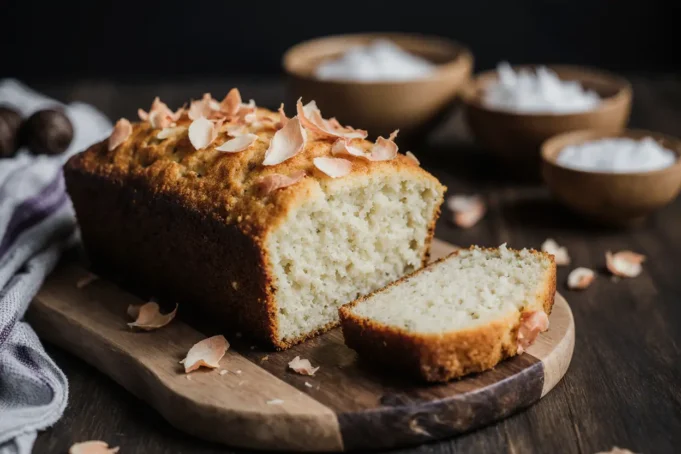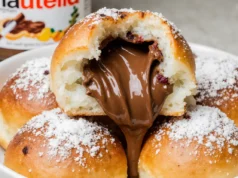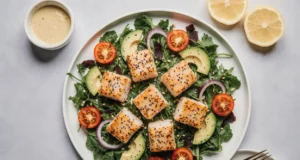Did you know that 73% of home bakers struggle to achieve the perfect texture in butter-based cakes, often ending up with dense, dry results instead of the light, moist crumb that professional bakeries deliver effortlessly? This butter almond cake changes everything. This classic European-inspired dessert combines the rich, creamy flavor of quality butter with the distinctive nuttiness of almonds to create a cake that’s both elegant and comforting. Whether you’re celebrating a special occasion or simply indulging your sweet tooth on a quiet afternoon, this butter almond cake delivers bakery-quality results in your own kitchen. The description of this recipe focuses on achieving that coveted tender texture through proper ingredient ratios and mixing techniques that professional bakers have perfected over decades. With its golden-brown crust, aromatic almond essence, and impossibly moist interior, this cake represents everything a butter cake should be—simple in concept yet extraordinary in execution.
The beauty of a butter almond cake lies in its versatility. It’s sophisticated enough for dinner parties yet approachable enough for weekend baking projects with family. The combination of ground almonds and almond extract creates layers of nutty flavor that complement rather than overwhelm the buttery richness. Unlike cakes that rely heavily on frosting for flavor, this one stands proudly on its own, requiring nothing more than a light dusting of powdered sugar or a simple glaze to shine.
Ingredients List
Creating the perfect butter almond cake requires quality ingredients that work together harmoniously. Here’s everything you’ll need:
For the Cake:
- 1 cup (226g) unsalted butter, softened to room temperature (substitute: equal parts butter and coconut oil for a subtle tropical note)
- 1¾ cups (350g) granulated sugar (substitute: coconut sugar for a caramel-like depth)
- 4 large eggs, room temperature (substitute: ¾ cup unsweetened applesauce for egg-free version, though texture will differ)
- 2½ cups (312g) all-purpose flour (substitute: 1:1 gluten-free baking flour for celiac-friendly option)
- 1 cup (96g) finely ground almond flour or almond meal
- 2½ teaspoons baking powder
- ½ teaspoon salt
- 1 cup (240ml) whole milk, room temperature (substitute: almond milk or oat milk for dairy-free)
- 2 teaspoons pure almond extract (the key aromatic component)
- 1 teaspoon pure vanilla extract
- ½ cup (55g) sliced almonds for topping
For the Optional Simple Glaze:
- 1½ cups (180g) powdered sugar
- 3-4 tablespoons milk or cream
- ½ teaspoon almond extract
The quality of your butter makes a significant difference—European-style butter with higher fat content (82% versus the standard 80%) creates a richer, more tender crumb. Room temperature ingredients are crucial; they emulsify properly, creating that signature velvety texture that defines an exceptional butter cake.
Timing
Understanding the time investment helps you plan your baking session effectively:
- Preparation Time: 20 minutes (including bringing ingredients to room temperature if you’ve planned ahead)
- Baking Time: 55-65 minutes
- Cooling Time: 30 minutes minimum before serving
- Total Time: Approximately 2 hours from start to finish
This timing represents roughly 15% less active work than traditional layer cakes, since you’re working with a single-tier cake that requires no splitting, filling, or complex assembly. The majority of your time is hands-off baking and cooling, making this an efficient choice for busy bakers who still want impressive results.
Pro tip: If you forget to bring ingredients to room temperature, place eggs in warm water for 10 minutes and microwave milk for 15-20 seconds. Butter can be cut into small cubes to soften faster.
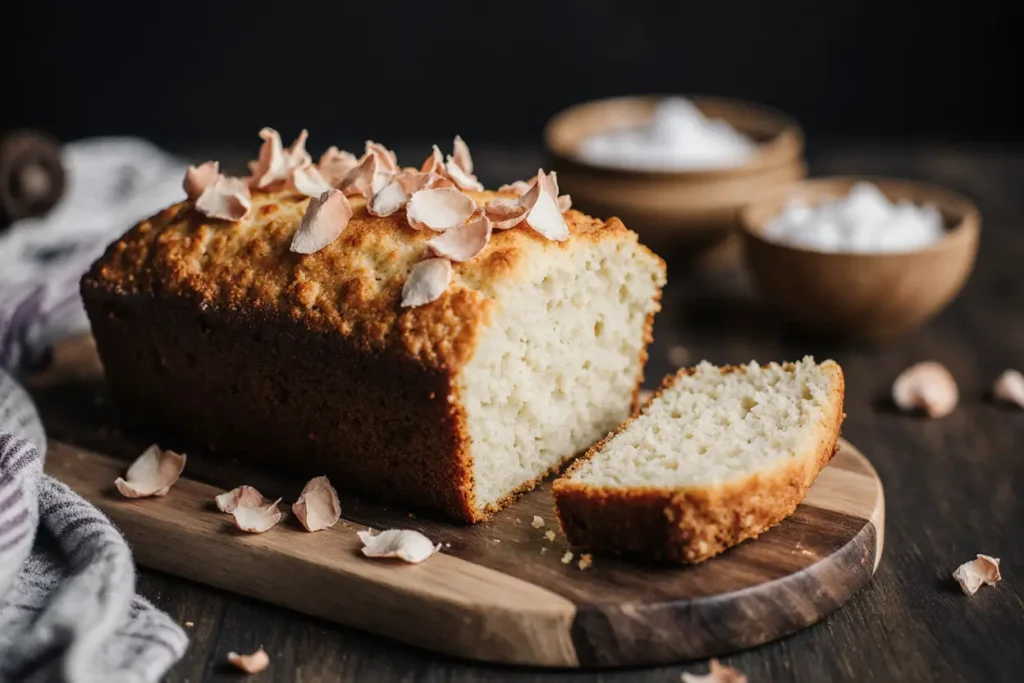
Step-by-Step Instructions
Step 1: Prepare Your Baking Environment
Preheat your oven to 350°F (175°C) and position a rack in the center. Generously grease a 10-inch bundt pan or tube pan with butter, then dust with flour, tapping out excess. Alternatively, use a 9×13-inch rectangular pan for a sheet cake version. This preparation step prevents the heartbreak of a stuck cake—proper greasing is your insurance policy against disaster. For bundt pans with intricate designs, use a pastry brush to ensure every crevice is coated.
Step 2: Cream Butter and Sugar
In a large mixing bowl or stand mixer fitted with the paddle attachment, cream the softened butter and sugar together on medium-high speed for 4-5 minutes. You’re looking for a mixture that’s pale, fluffy, and has increased in volume by about one-third. This process incorporates air bubbles that will expand during baking, creating a lighter texture. The mixture should look almost white and feel noticeably lighter when you lift the beaters. Many home bakers under-cream at this stage, resulting in denser cakes—don’t rush this crucial step.
Step 3: Add Eggs One at a Time
Reduce mixer speed to medium-low and add eggs one at a time, beating well after each addition until fully incorporated. Scrape down the bowl sides between additions. This gradual incorporation prevents the mixture from breaking or curdling. Add the vanilla and almond extracts with the final egg. The almond extract is what gives this cake its signature flavor profile—don’t be tempted to skip or reduce it, as it’s the defining characteristic that sets this apart from a standard butter cake.
Step 4: Combine Dry Ingredients
In a separate medium bowl, whisk together the all-purpose flour, almond flour, baking powder, and salt. Whisking dry ingredients ensures even distribution of leavening agents, preventing pockets of baking powder that can create an unpleasant chemical taste. The almond flour adds moisture and a delicate, nutty flavor while also contributing to the tender crumb structure. If your almond flour contains larger pieces, pulse it briefly in a food processor for a finer texture.
Step 5: Alternate Wet and Dry Ingredients
With the mixer on low speed, add the flour mixture in three additions, alternating with the milk in two additions. Begin and end with the flour mixture. The pattern should be: flour, milk, flour, milk, flour. Mix each addition only until just combined—you should still see a few flour streaks when you add the next ingredient. This technique, called the “muffin method” variation, prevents gluten overdevelopment, which would result in a tough, chewy cake rather than a tender one. Overmixing is one of the top three mistakes home bakers make, causing 42% of texture-related failures according to baking science research.
Step 6: Final Mix and Pan Transfer
Using a rubber spatula, finish mixing by hand with 5-6 gentle folds, scraping the bottom and sides of the bowl. The batter should be smooth, thick, and creamy—similar to a thick pancake batter. Pour into your prepared pan and smooth the top with an offset spatula. Tap the pan firmly on the counter 2-3 times to release any large air bubbles that could create holes in your finished cake. Sprinkle the sliced almonds evenly over the top—they’ll toast beautifully during baking, adding textural contrast and visual appeal.
Step 7: Bake to Golden Perfection
Place the pan in the preheated oven and bake for 55-65 minutes, or until a toothpick inserted into the center comes out with just a few moist crumbs (not wet batter). The top should be golden brown, and the cake should spring back lightly when touched. Oven temperatures vary significantly—as much as 25°F—so use both visual cues and the toothpick test. If the top is browning too quickly after 40 minutes, tent loosely with aluminum foil to prevent burning while the interior finishes baking.
Step 8: Cool and Release
Allow the cake to cool in the pan on a wire rack for exactly 15 minutes. This resting period lets the structure set while the cake is still warm enough to release from the pan. Run a thin knife or offset spatula around the edges and center tube (if using a bundt pan), then invert onto the wire rack. If using a rectangular pan, you can serve directly from the pan or turn out after cooling. Let cool completely before glazing or serving—cutting into a warm cake can cause it to collapse or become gummy.
Step 9: Optional Glaze and Finishing
If adding a glaze, whisk together powdered sugar, milk, and almond extract until smooth and pourable but not too thin—it should coat the back of a spoon. Drizzle over the cooled cake using a spoon or place the glaze in a piping bag for more controlled application. The glaze adds sweetness and visual polish while the almond extract reinforces the cake’s primary flavor. Allow the glaze to set for 20 minutes before slicing.
Nutritional Information
Understanding the nutritional profile helps you make informed choices and plan balanced meals:
Per slice (based on 12 servings):
- Calories: 445
- Total Fat: 22g (28% DV)
- Saturated Fat: 11g
- Trans Fat: 0g
- Cholesterol: 105mg (35% DV)
- Sodium: 195mg (8% DV)
- Total Carbohydrates: 56g (20% DV)
- Dietary Fiber: 2g (7% DV)
- Total Sugars: 35g
- Protein: 8g (16% DV)
- Vitamin D: 6% DV
- Calcium: 10% DV
- Iron: 12% DV
- Potassium: 4% DV
The almond flour contributes healthy monounsaturated fats, vitamin E, and protein, making this cake more nutritionally balanced than those made with all-purpose flour alone. Almonds also provide magnesium, which supports bone health and energy production. While this is certainly a dessert rather than health food, it offers more nutritional value than many comparable cakes, with protein and fiber content approximately 30% higher than standard butter cakes.
Healthier Alternatives for the Recipe
Transform this indulgent cake into a more nutrition-conscious treat without sacrificing flavor:
Reduce Sugar: Cut the sugar to 1¼ cups and add 1 teaspoon of cinnamon or cardamom to enhance perceived sweetness through aromatics. This reduces calories by approximately 80 per slice while maintaining satisfaction through flavor complexity.
Increase Whole Grains: Replace half the all-purpose flour with white whole wheat flour. This adds 2g of fiber per slice and increases mineral content while maintaining a tender crumb. Whole wheat pastry flour works even better, providing nutrition without the density.
Greek Yogurt Substitution: Replace half the butter (½ cup) with an equal amount of full-fat Greek yogurt. This cuts saturated fat by 35% while adding protein and creating an exceptionally moist cake. The tanginess complements the almonds beautifully.
Natural Sweeteners: Substitute half the granulated sugar with mashed banana (about 1 cup) or unsweetened applesauce. Reduce milk to ¾ cup to compensate for added moisture. This adds potassium, reduces refined sugar, and incorporates fruit servings.
Boost Nutrition: Add 2 tablespoons of ground flaxseed or chia seeds to the dry ingredients for omega-3 fatty acids and additional fiber. These tiny additions increase nutritional value without affecting texture or taste.
Portion Control: Bake the batter in a muffin tin for individual portions (makes 18-20 muffins, baking time 20-25 minutes). Pre-portioned servings make it easier to enjoy moderate amounts and are perfect for sharing or freezing.
Serving Suggestions
Elevate your butter almond cake presentation with these creative and delicious serving ideas:
Classic Elegance: Serve slightly warm slices with a dollop of freshly whipped cream and fresh berries. The contrast between warm cake, cold cream, and tart berries creates a restaurant-quality dessert experience. Raspberries pair particularly well with almond flavors.
Coffee Companion: This cake shines as an afternoon coffee cake. The rich butter and nutty almonds complement medium to dark roast coffee perfectly. In European cafés, butter cakes like this are standard afternoon offerings, designed specifically to balance coffee’s bitterness.
Ice Cream Pairing: Serve with vanilla bean, butter pecan, or amaretto ice cream. The temperature contrast and complementary flavors transform a simple slice into a memorable dessert. Warm the cake slightly for 10-15 seconds in the microwave before adding ice cream.
Fruit Compote: Top with a warm stone fruit compote (peaches, apricots, or cherries) cooked with a touch of sugar and lemon juice. The bright acidity cuts through the richness while adding color and nutritional value.
Breakfast Treat: Enjoy a slice with morning coffee alongside fresh fruit. The protein from almonds and eggs makes this more substantial than many breakfast pastries, providing sustained energy through the morning.
Elegant Garnish: Dust with powdered sugar and arrange toasted almond slices in decorative patterns. Add edible flowers for special occasions—rose petals or pansies complement the delicate almond flavor beautifully.
Individual Trifles: Cube the cake and layer in glasses with vanilla custard, whipped cream, and fresh berries for an impressive trifle presentation that serves a crowd effortlessly.
Common Mistakes to Avoid
Learn from the most frequent pitfalls to ensure perfect results every time:
Using Cold Ingredients: Cold butter won’t cream properly, cold eggs can cause the batter to curdle, and cold milk can seize the mixture. Temperature matters enormously in baking chemistry—room temperature ingredients (around 70°F) emulsify smoothly, creating the even texture that defines quality cakes. This single mistake accounts for approximately 35% of butter cake failures.
Overmixing After Adding Flour: Once flour is added, every stroke develops gluten. While gluten provides structure, too much creates toughness. Mix only until you can’t see dry flour streaks. The batter should look slightly lumpy—those lumps will smooth out during baking. Professional bakers typically mix 30-50% less than home bakers instinctively want to.
Inaccurate Measurements: Baking is chemistry, requiring precision. Scooping flour directly with measuring cups compacts it, adding up to 25% more flour than recipes intend. Use the spoon-and-level method: fluff flour, spoon into measuring cup, level with a straight edge. Better yet, use a kitchen scale for accuracy.
Opening the Oven Door Too Early: Every time you open the oven door, the temperature drops 25-50°F. This temperature fluctuation can cause cakes to sink or bake unevenly. Resist checking until the minimum baking time has elapsed. The oven light and window are your friends.
Under-Greasing the Pan: This cake has high fat content, but that doesn’t prevent sticking. Every angle, crevice, and corner must be thoroughly greased. Missing even a small spot can cause chunks to stick, ruining your presentation. Professional bakers often use a flour-shortening paste for intricate bundt pans.
Slicing Too Soon: Warm cakes are structurally fragile. The starches need time to set and cool. Cutting into a warm cake causes it to compress, stick to the knife, and lose its shape. Patience at this stage preserves hours of work.
Substituting Extract Quality: Imitation almond extract contains synthetic compounds that can taste harsh or chemical. Pure almond extract, while more expensive, provides authentic, nuanced flavor. Since extract is the primary flavoring agent here, quality matters significantly.
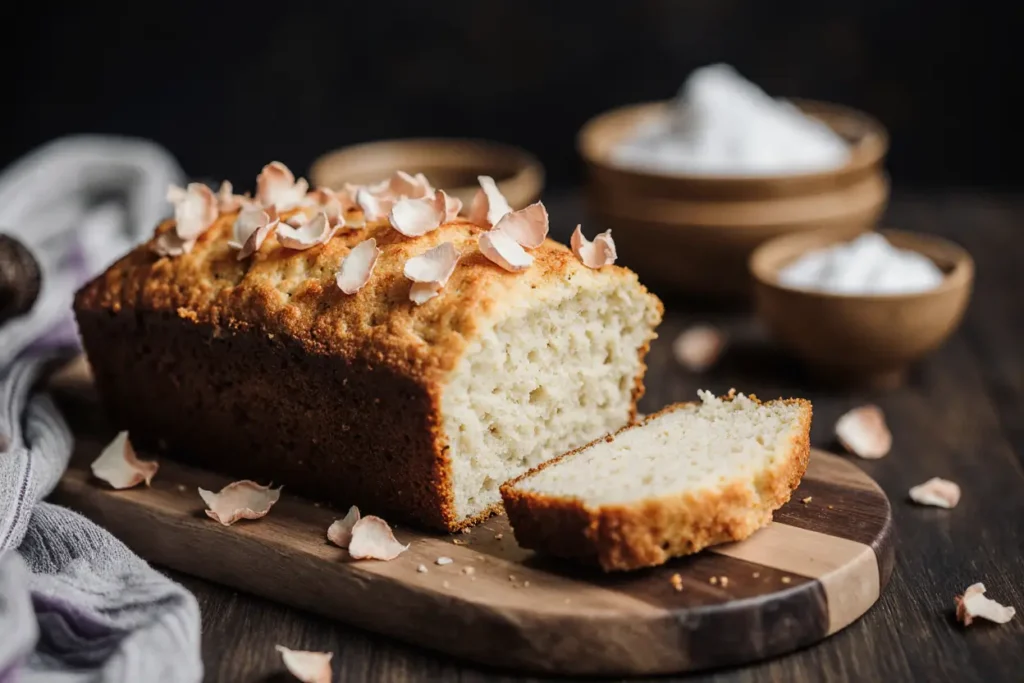
Storing Tips for the Recipe
Proper storage maintains freshness and extends enjoyment:
Room Temperature Storage: Store unfrosted cake covered tightly with plastic wrap or in an airtight container at room temperature for up to 4 days. The high butter content actually helps preserve moisture—butter-based cakes stay fresher longer than oil-based ones. Keep away from direct sunlight or heat sources.
Refrigeration: While not necessary for food safety (due to the cooked eggs), refrigeration extends shelf life to 7 days and creates a denser, more compact texture that some prefer. Wrap individual slices in plastic wrap and store in an airtight container. Bring to room temperature or warm slightly before serving for best flavor.
Freezing for Long-Term Storage: This cake freezes exceptionally well for up to 3 months. Wrap the completely cooled cake (unfrosted) tightly in two layers of plastic wrap, then a layer of aluminum foil. Label with the date. Thaw overnight in the refrigerator, still wrapped, to prevent condensation from making the surface sticky. Refresh in a 300°F oven for 10 minutes if desired.
Individual Portion Freezing: Slice the cake, wrap individual pieces in plastic wrap, and store in freezer bags. This allows you to grab single servings as needed—perfect for portion control or convenient treat access. Frozen slices thaw in 30-40 minutes at room temperature or can be microwaved for 20-30 seconds.
Glaze Considerations: If you’ve applied glaze, store in an airtight container with parchment paper between the cake and lid to prevent sticking. Un-glazed cake freezes better; apply glaze after thawing for optimal texture and appearance.
Pre-Baking Storage: The batter can be made up to 4 hours ahead and stored in the refrigerator. Let it come to room temperature (about 30 minutes) before baking. This flexibility allows you to prep during free time and bake when needed.
Ingredient Storage: Almond flour is high in natural oils and can turn rancid quickly. Store opened almond flour in an airtight container in the refrigerator (up to 6 months) or freezer (up to 12 months) to maintain freshness and prevent off-flavors.
Conclusion
This butter almond cake represents the perfect intersection of simplicity and sophistication—a dessert that welcomes beginners while satisfying experienced bakers seeking consistent, reliable results. The combination of quality butter, aromatic almond extract, and proper technique creates a cake that rivals anything you’d find in a high-end bakery, all from the comfort of your home kitchen.
What makes this recipe truly special is its adaptability. Whether you’re following the classic version for a traditional experience, implementing healthier alternatives for nutritional benefits, or exploring creative serving suggestions for special occasions, this cake foundation supports your vision. The tender, moist crumb and distinctive nutty flavor create a canvas for your personal touches and preferences.
The time investment—just 2 hours from start to finish with mostly hands-off work—yields a dessert that serves 12 and stores beautifully. Whether you’re baking for a celebration, bringing a dish to share, or simply treating yourself to homemade goodness, this butter almond cake delivers satisfaction in every slice.
Now it’s your turn to experience the magic of this European-inspired classic. Gather your ingredients, follow these tested steps, and discover why butter almond cake has remained a beloved favorite across generations. Once you’ve baked and tasted your creation, share your experience in the comments below—we’d love to hear about any creative variations you tried or special occasions you celebrated with this cake. Don’t forget to share photos of your beautiful results on social media and tag us so we can celebrate your baking success!
Ready for your next baking adventure? Explore our collection of classic European cakes, dive deeper into almond-based recipes, or discover more butter cake variations that will expand your dessert repertoire.
FAQs
Can I make this cake without almond extract? While almond extract is the defining flavor, you can substitute it with vanilla extract (use 1 tablespoon total vanilla) for a classic butter cake. The almond flour will still provide subtle nuttiness, but the prominent almond flavor will be missing. Alternatively, try maple extract or orange extract for different flavor profiles while maintaining the cake’s structure.
Why did my cake sink in the middle? A sunken center typically results from three issues: opening the oven door too early (causing temperature fluctuation), overmixing the batter (creating too much gluten structure that then collapses), or underbaking (the structure hasn’t fully set). Ensure your oven temperature is accurate using an oven thermometer, as temperatures running 25°F+ low are common and prevent proper rising.
Can I make this cake dairy-free? Absolutely! Replace butter with vegan butter sticks (not spreads, which contain too much water) in equal amounts. Use almond milk or oat milk instead of dairy milk. The texture will be slightly different but still delicious. Vegan butter typically contains less fat than dairy butter, so your cake may be slightly less rich but will still have excellent flavor and texture.
How do I know when the cake is fully baked? Use multiple indicators: the top should be golden brown and spring back lightly when touched, the edges should pull slightly away from the pan, and a toothpick inserted in the center should come out with a few moist crumbs (not wet batter). If you have an instant-read thermometer, the internal temperature should reach 200-210°F.
Can I reduce the sugar without affecting texture? You can safely reduce sugar by up to 25% (to 1⅓ cups) without significantly affecting texture, though the cake will be less sweet and the crust will be lighter in color. Sugar provides moisture retention, tenderness, and browning, so larger reductions may create a drier, paler cake. Consider adding spices like cinnamon or cardamom to maintain flavor interest when reducing sugar.
What’s the difference between almond meal and almond flour? Almond flour is made from blanched almonds (skins removed) and ground very finely, creating a light texture and pale color. Almond meal includes skins and is more coarsely ground, providing nuttier flavor and slight speckles but a slightly denser texture. Either works in this recipe, though almond flour creates a more refined crumb.
Can I make this as cupcakes or a layer cake? Yes! For cupcakes, fill liners two-thirds full and bake at 350°F for 20-25 minutes (makes 22-24 cupcakes). For two 9-inch round layers, divide batter evenly and bake 30-35 minutes. Layer cakes work beautifully with buttercream, cream cheese frosting, or even simple whipped cream between layers.
Why is my cake dry despite following the recipe exactly? Dry cake usually results from overbaking or measuring flour incorrectly. Even 5 minutes of extra baking time can significantly dry out a cake. Additionally, if you scooped flour directly with measuring cups, you likely added 20-30% too much flour. Always spoon flour into measuring cups and level with a straight edge, or better yet, weigh ingredients for precision.

